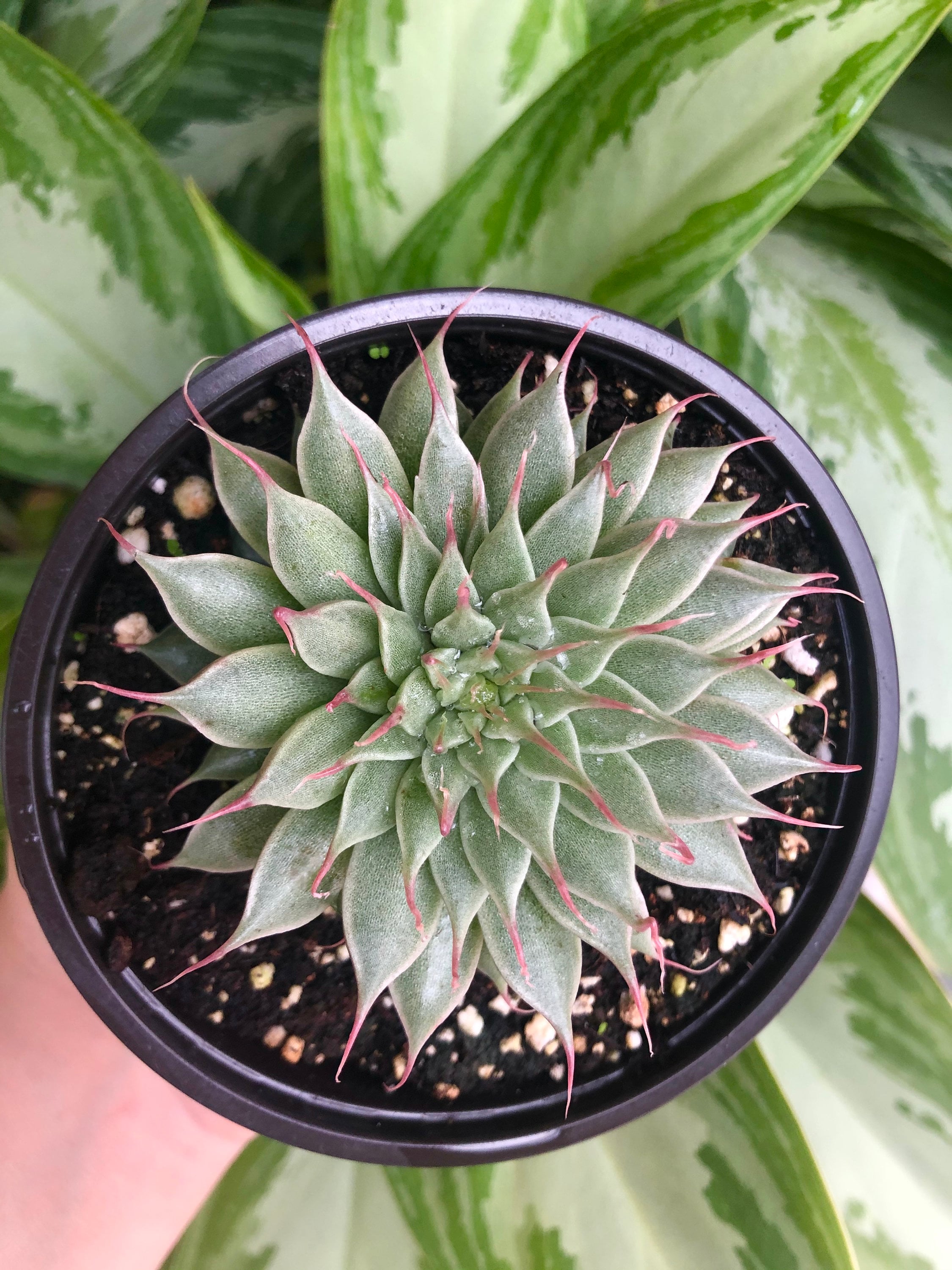The Silver Star is a combination of Graptopetalum and Echeveria plants and has long, silver-green leaves that can become tinged with red if it is given the correct amount of stress. During the Spring season, this succulent blooms with pink and white flowers.
Table of Contents
Care and Propagation Information
Silver Star is a favorite among succulent enthusiasts for its ability to add a unique and attractive touch to any summer succulent garden.
Watering
‘Silver Star’ requires the same amount of water as other succulents. To ensure the best care, it is best to water the plant deeply and then wait until the soil is completely dry before watering again.
Where to Plant
Silver Star is not tolerant of temperatures lower than 10° F (-12.2° C), so it’s best to grow it in a pot that can be brought inside if you live in a climate where the temperature drops below this. This succulent should be placed in an area with full to partial sunlight.
How to Propagate Graptoveria ‘Silver Star’
Offsets
This succulent will produce small shoots that will come up around the base of the plant. To propagate them, simply remove them and leave them to dry for one to two days before putting them in the soil again.
Leaves
Place the leaf in a small dish of water and wait for small roots to form at the base of the leaf. After the roots have formed, transfer the leaf to a pot of soil and keep it moist until the new plant is established.
To propagate ‘Silver Star’ leaves, twist off a strong and healthy leaf from the stem, taking a bit of the stem if necessary. Place the leaf in a bowl of water and wait for the roots to start growing from the base. Once the roots are established, move the leaf to a pot filled with soil and keep it moist until the new plant is established.
Allow the leaf to heal and form a protective callus over several days. Place it on top of soil that is well-draining, and ensure that it does not become soggy. Once the soil has dried, water thoroughly. Once the leaf has grown roots and a rosette has formed, and the original leaf has withered, transplant it into the soil.
Care and Propagation Information
General Care for Graptoveria ‘Silver Star’
Watering
‘Silver Star’ requires the same amount of water as other succulents. To ensure the best care, it is best to water the plant deeply and then wait until the soil is completely dry before watering again.
Where to Plant
Silver Star is not tolerant of temperatures lower than 10° F (-12.2° C), so it’s best to grow it in a pot that can be brought inside if you live in a climate where the temperature drops below this. This succulent should be placed in an area with full to partial sunlight.
How to Propagate Graptoveria ‘Silver Star’
Offsets
This succulent will produce small shoots that will come up around the base of the plant. To propagate them, simply remove them and leave them to dry for one to two days before putting them in the soil again.
Leaves
Place the leaf in a small dish of water and wait for small roots to form at the base of the leaf. After the roots have formed, transfer the leaf to a pot of soil and keep it moist until the new plant is established.
To propagate ‘Silver Star’ leaves, twist off a strong and healthy leaf from the stem, taking a bit of the stem if necessary. Place the leaf in a bowl of water and wait for the roots to start growing from the base. Once the roots are established, move the leaf to a pot filled with soil and keep it moist until the new plant is established.
Allow the leaf to heal and form a protective callus over several days. Place it on top of soil that is well-draining, and ensure that it does not become soggy. Once the soil has dried, water thoroughly. Once the leaf has grown roots and a rosette has formed, and the original leaf has withered, transplant it into the soil.
FAQ
How do you care for Graptoveria?
Graptoveria ‘Fred Ives’ is a type of succulent that thrives in full sun, showing off vibrant colors when receiving ample sunlight. It can also tolerate some partial sun, and is ideal for growing in a container outdoors. While this type of succulent is cold hardy, it does not tolerate frost, so be sure to keep it away from cold temperatures.
What is the difference between Graptoveria and Echeveria?
How do I identify an Echeveria plant?
Echeveria can be identified by their beautiful, rosette-shaped leaves with a plump, spoon-like shape and smooth edges. These plants are polycarpic, meaning they flower annually, and their leaves typically have a pointed tip.
What is the common name for Graptoveria?
The rosettes of this cultivar are quite large and resemble a chalice or cup.
What is the difference between Graptoveria and Graptopetalum?
Graptoveria have leaves that are thicker than those of the Graptopetalum amethystinum succulent, which have a resemblance to shiny pebbles.



